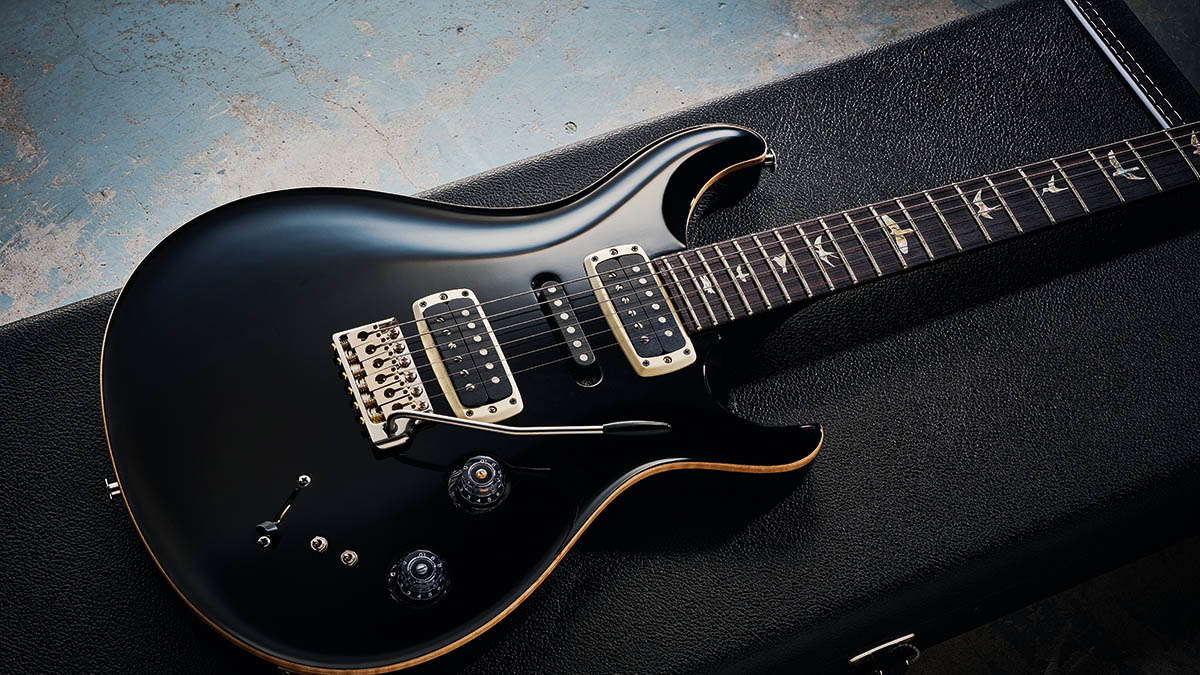Guitar World Verdict
From the wood choice and weight through to the latest version of the PRS TCI pickups and circuit tweaking, the neck shape and playability – everything about this guitar is first class.
Pros
- +
Everything!
Cons
- -
Well, quality costs, but apart from a disregard for left-handed players, nothing!
You can trust Guitar World
Here’s a guitar we’ve been waiting for since early 2019 when Paul Reed Smith showed us the prototype at a dealer event in the UK. Technically, it has been available first as a cost-a-lot 2019 Private Stock limited run of 120, followed in 2020 by a 200-only Experience run and subsequent special dealer-order Wood Library versions.
Replacing the outgoing 509, the new Modern Eagle V is a rare addition to the main Core line, the top tier of PRS’s USA set-neck production. Obviously, it’s the fifth iteration of the Modern Eagle model, which dates back to 2004; version four, the Quatro, launched in 2010 and lasted just a couple of years in the catalogue.
Our V version has two humbuckers and additional middle-placed single coil. Though it’s not the first three-pickup ME – the celebratory 25th Anniversary ME II from 2010 featured three Narrowfield mini-humbuckers – it does boast 17 different sounds.
Outwardly, the MEV is all about its sonic options, but let’s not forget the guitar. It’s a near 40-year-old design that’s been constantly tweaked to a detailed level of quality that’s still setting standards. The ‘Modern Benchmark’ isn’t quite as catchy as a name, but it’s more apt. Based on that original 1985 PRS Custom, in this rare all-black gloss nitro livery it might have been called a Standard back in the day.
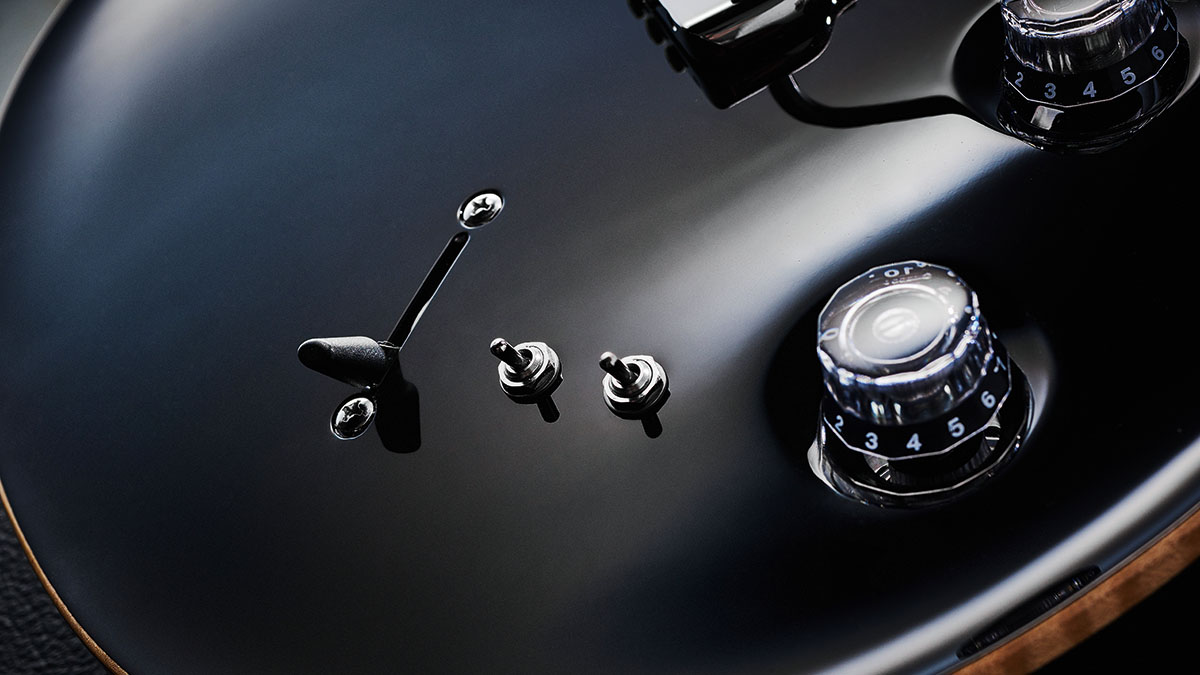
Aside from the dark East Indian rosewood fingerboard and headstock veneer, the only other wood we can see is the natural edge of the maple top – the ‘binding’. In a translucent colour you’d see that hallmark figured maple top, a one-piece quarter-sawn Honduran mahogany neck and also its one-piece African mahogany body back.
Equally established is the proprietary hardware, the Phase III top-locking and open-backed tuners designed not just for function but to maximise the string’s energy. Then there’s the finely machined, all-brass Gen III vibrato – only available from Core level upwards – which has evolved from the original PRS design. Again, function and sound lie behind the gradual evolution of this vibrato.
Like that original Custom, the scale length is 635mm (25 inches), the ‘halfway house’ between Fender and Gibson that was always a part of the sonic duality of the PRS proposition along with its dual humbuckers and vibrato – blurring the lines between the classic Les Paul and Stratocaster. But utilising three pickups seems to be becoming a bit of a trend for PRS.

The last two additions to the Core line-up, the Studio and the Special Semi Hollow, also have three pickups, like the recent additions to the Bolt-On range, the Silver Sky and Fiore. Here, the outer TCI humbuckers are the narrower 408 bass (neck) pickup style, also featured on Paul’s Guitar, augmented by a narrow single coil (not a humbucker) in the middle position.
While the previous versions of the MEV featured three small-tipped mini-toggle switches, here we lose the one that switched the volume control from 500k to 250kohms (see Under The Hood, opposite), while the two remaining mini-switches switch each humbucker to true single-coil mode, as before.
While the five-way lever pickup selector gives us the usual Stratocaster-type selections, a pull-switch on the tone control allows all three pickups to be voiced together, or the neck and bridge to be combined.

Feel & Sounds
The MEV’s gloss black is mirror-perfect. The only problem is that, even with a little playing, the finger marks make it look like it’s done a few hours of gigs.
Conversely, it does somehow appear less precious than the typically PRS figured maple aesthetic, and that opaque colour seems to draw your eye to the curves and contours instead of the wood grain. It’s a near-perfect weight at 3.54kg (7.79lb), too, and if you can find a fault here in either the build, finish or the high-level playability, well, you’re better than us.
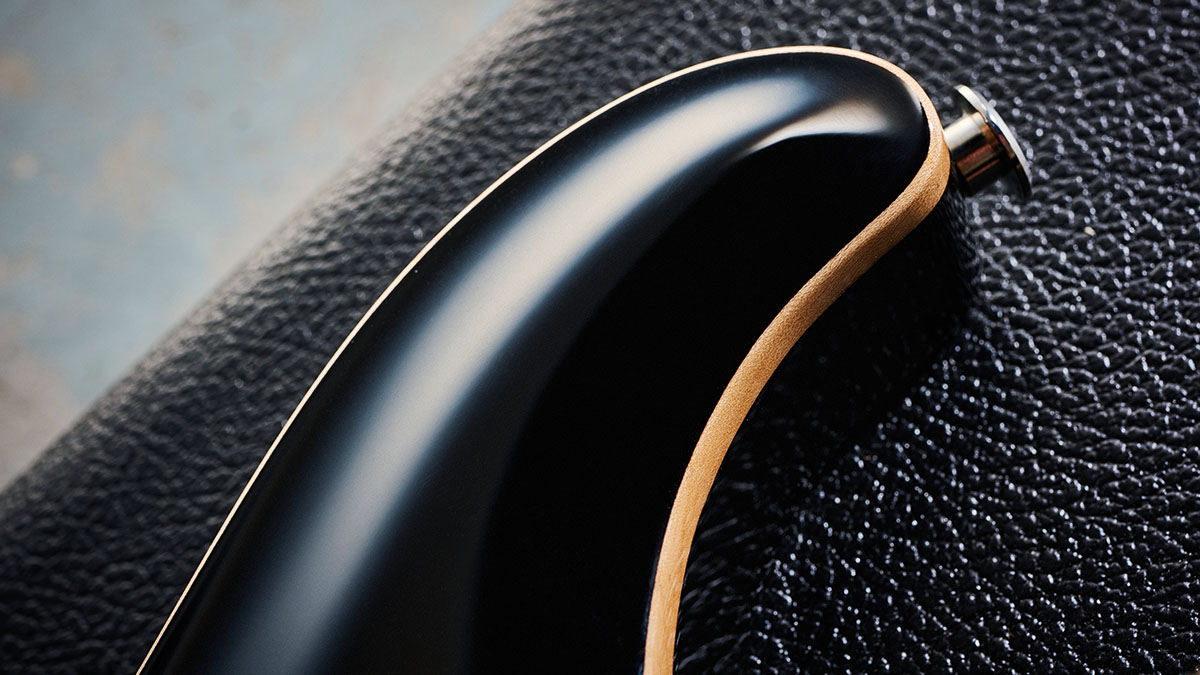
The Pattern neck profile is based on the long-running Wide-Fat and feels like an old friend with a width of 43.3mm at the nut and 53mm by the 12th. Depth-wise, it measures 22mm at the 1st fret and 24mm by the 12th.
Our spec sheet tells us we have PRS’s ‘vintage’ fretwire, also used on Paul’s Guitar, but our callipers tell us it’s a little wider: approximately 2.8mm wide and 1.3mm high, more like those used on the DGT. To say a neck ‘disappears’ is a bit of a cliché, but this one feels like home.
If the craft is impressive, so are the sounds. Trust us, it’ll take you a while to get to know all 17 options. But is that the point? PRS has blurred the boundaries between humbuckers and single coil-like sounds many times before and it gives this instrument a chameleon-like voice that’s hard to pin down or pigeonhole.
Rather than nailing a ’59 Burst at the neck, for example, we’re treated to a full-bodied voice that has exceptional balance between thickness, clarity and a smooth velveteen texture. Switching to the bridge, we do get a little PAF-like honk, but there’s no shrillness: the highs remain clear with pokey thickness.
The true single-coil sounds are noticeably different but superbly balanced in that the highs are more present, the mids relaxed and there’s more cut to the bass response. It is Fender-y but put through Mr Smith’s particular channel strip and carefully and musically EQ’d. The highs are never sharp, and the lows or mids don’t run away with you or sound deficient.
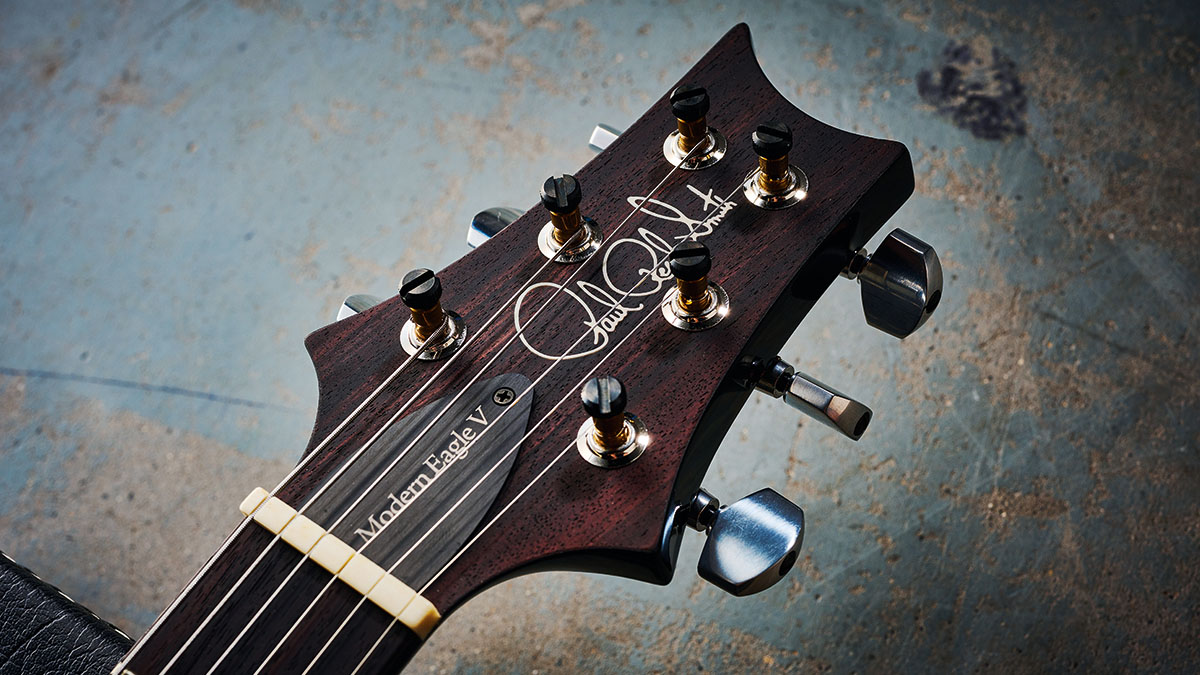
We were lucky enough to share the MEV’s test time with those new Myles Kennedy and NF 53 bolt-ons, plus the PRS CE 24 Satin Nitro Ltd. All very fine guitars, but if they come across as roadhorses, the MEV somehow absorbs those sounds and presents them in perfectly produced tuxedo style.
Of course, the MEV is more expensive, just about double what you’d pay for that CE 24, but, honestly, it feels a couple of levels up in everything from the hardware to the super-smooth finish, which is very different from that more rudimentary-looking CE 24.
The MEV’s palette of sounds comes across as being more refined, too, and that’s on top of a perfect setup, very stable tuning and sweet intonation. The MEV doesn’t quite play itself, but it’s close.
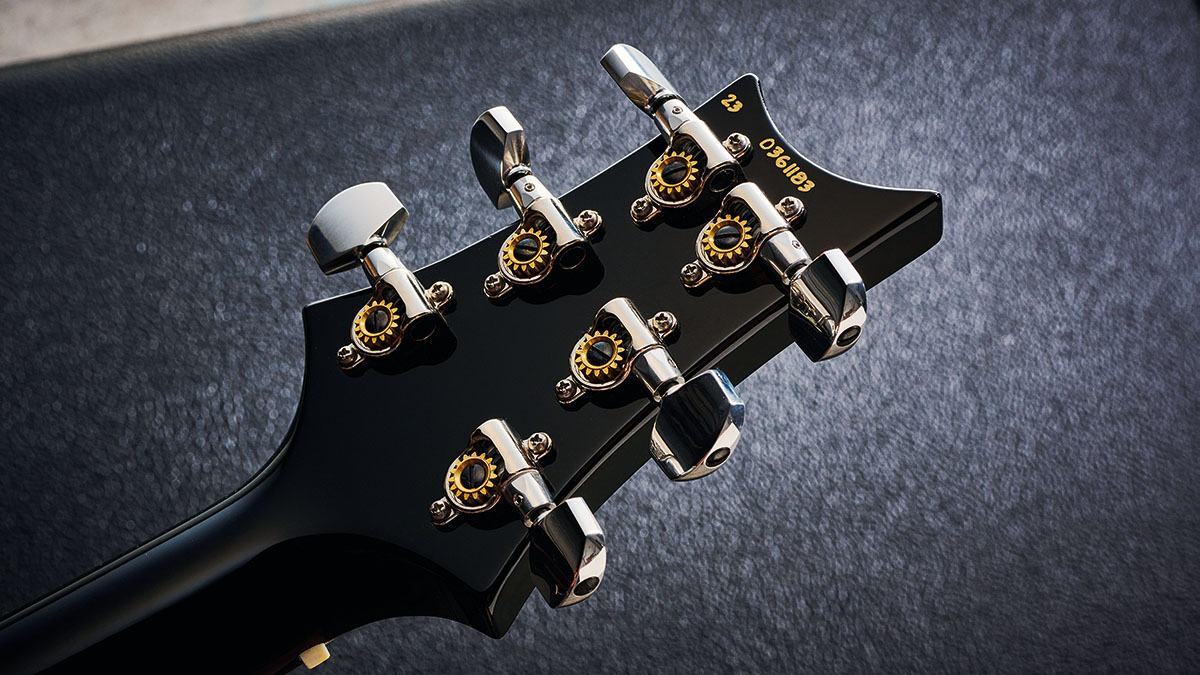
Verdict
In two years, PRS will celebrate four decades of high-level guitar making, all under the watchful eyes and ears of Paul Reed Smith. The cumulative experience in the now sizable building in Stevensville, Maryland, is probably unmatched along with the attention to the smallest detail, the proprietary hardware, pickups and circuitry.
The MEV has the biggest selection of (sometimes subtly) different sound options of any current PRS Core guitar, but don’t forget all but a few – namely, the Tremonti and Santana signatures – offer both humbucking and single coil sounds.
For the working musician, not to mention recording player, the MEV is the latest in a long line of Swiss Army knife do-it-all instruments. The best so far? We think so, but unless Mr Smith decides to hang up his sonic shoes anytime soon, we’ll guarantee it won’t be the last.
Specs

- PRICE: $4,950 / £4,599 (inc case)
- ORIGIN: USA
- TYPE: Double-cutaway, carved-top solidbody electric
- BODY: 1-piece mahogany with figured maple top
- NECK: 1-piece mahogany, pattern profile, glued-in
- SCALE LENGTH: 635mm (25”)
- NUT: Bone
- FINGERBOARD: Rosewood, outline bird w/ centre inlays, 254mm (10”) radius
- FRETS: 22, medium
- HARDWARE: PRS Gen III vibrato, PRS Phase III locking tuners (w/brass posts and aluminium buttons)
- STRING SPACING, BRIDGE: 52.5mm
- ELECTRICS: PRS TCI Treble and Bass humbuckers, NS-01 single coil in middle position, 5-way toggle pickup selector switch, 2x mini-toggle switches for independent pickup single coil/humbucking modes, master volume and master tone (with pull switch to select bridge and neck or all 3 pickups together)
- LEFT-HANDERS: No
- FINISHES: Black (as reviewed) and Antique White opaque colours plus choice of 12 trans colours including McCarty Sunburst, Purple Mist and Yellow Tiger
- CONTACT: PRS Guitars

Dave Burrluck is one of the world’s most experienced guitar journalists, who started writing back in the '80s for International Musician and Recording World, co-founded The Guitar Magazine and has been the Gear Reviews Editor of Guitarist magazine for the past two decades. Along the way, Dave has been the sole author of The PRS Guitar Book and The Player's Guide to Guitar Maintenance as well as contributing to numerous other books on the electric guitar. Dave is an active gigging and recording musician and still finds time to make, repair and mod guitars, not least for Guitarist’s The Mod Squad.
“After I made the RD with Epiphone I found it wasn't actually that comfortable to play live”: Bring Me the Horizon’s Lee Malia is no stranger to signature offsets – but he wasn’t too fond of his first
“Tom would say, ‘Play your guitar with a car key.’ It was very experimental”: Little Feat's Fred Tackett recalls Tom Waits' left-field approach to guitar playing – and his one-of-a-kind studio sessions
I spent way too long looking through all 372 deals in the Thomann Easter sale – here are the 5 I’d buy
